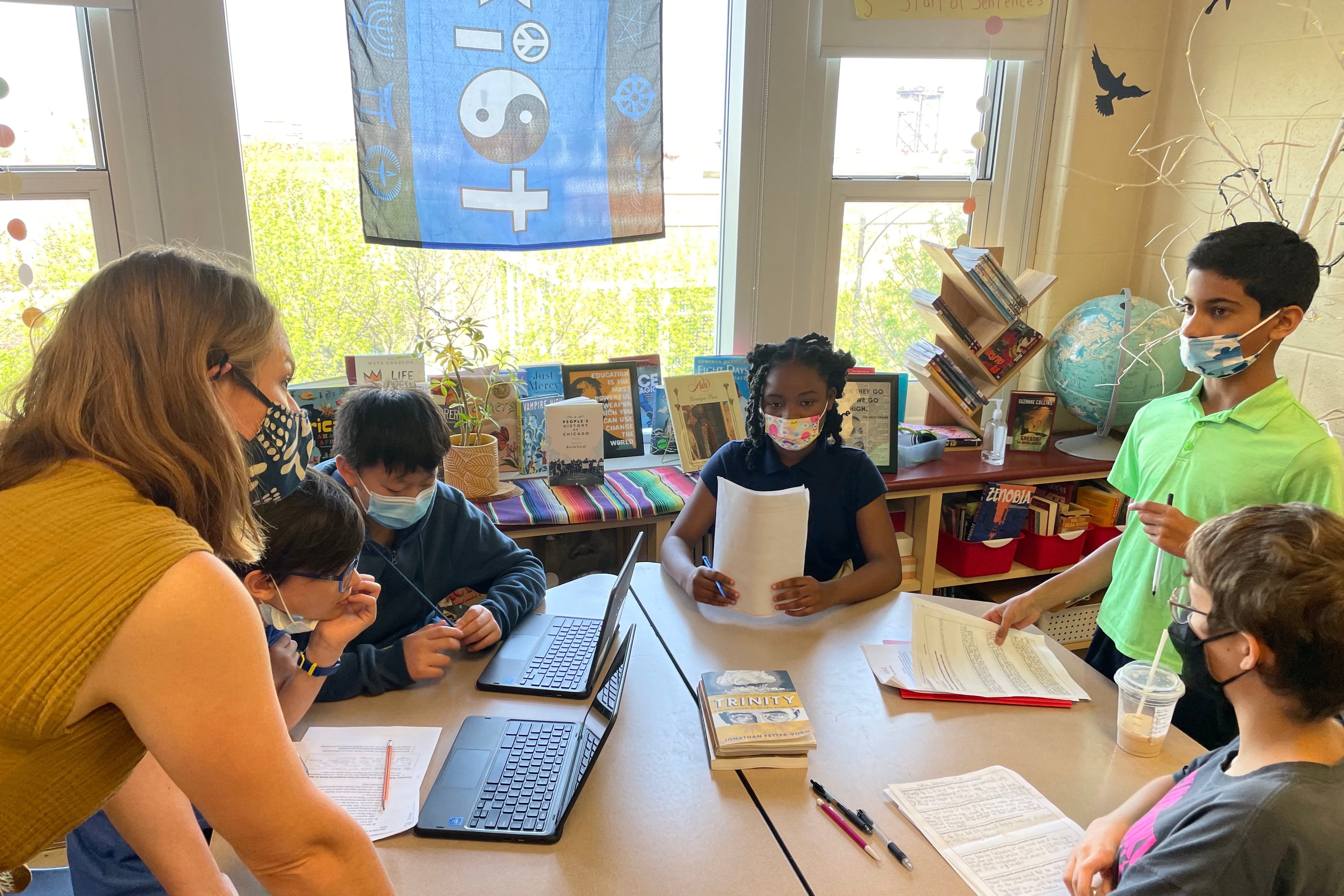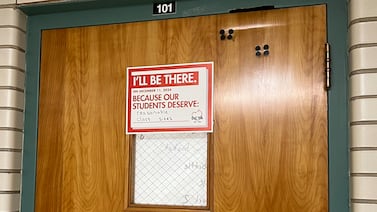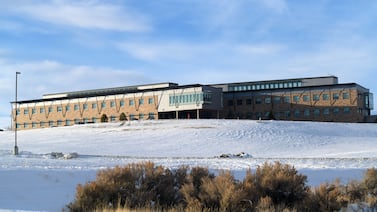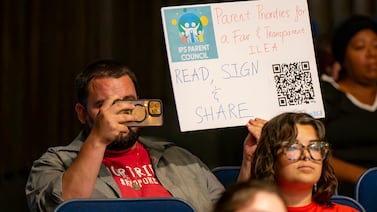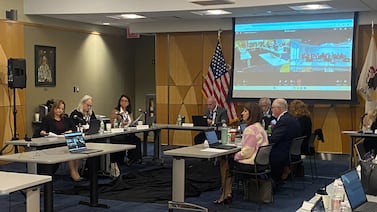On the eve of the pandemic, Aiko Kojima Hibino came across a viral photo showing dozens of copies of John Hersey’s nonfiction classic “Hiroshima” discarded in a Chicago high school’s dumpster.
On social media, the photo was sparking a lively debate about how school libraries should manage their collections. But to a stunned Kojima Hibino, a Japanese American parent whose eighth grader attends National Teachers Academy, the image symbolized a larger issue:
A crucially important part of American history — the U.S. atomic bombing of the Japanese cities of Hiroshima and Nagasaki at the end of World War II — seemed to be sliding into obscurity.
Kojima Hibino sprang into action. She enlisted a friend and colleague — a local college professor whose family survived the Hiroshima bombing — and two middle school educators at NTA, an elementary on the Near South Side, to create a new curriculum delving into the country’s fraught relationship with nuclear power.
“This issue is affecting people here and now — not just unfortunate people far away in Japan a long time ago,” said Yuki Miyamoto, who teaches nuclear and environment ethics at DePaul University and helped create the curriculum. “It’s a racial justice issue. It’s an environmental issue.”
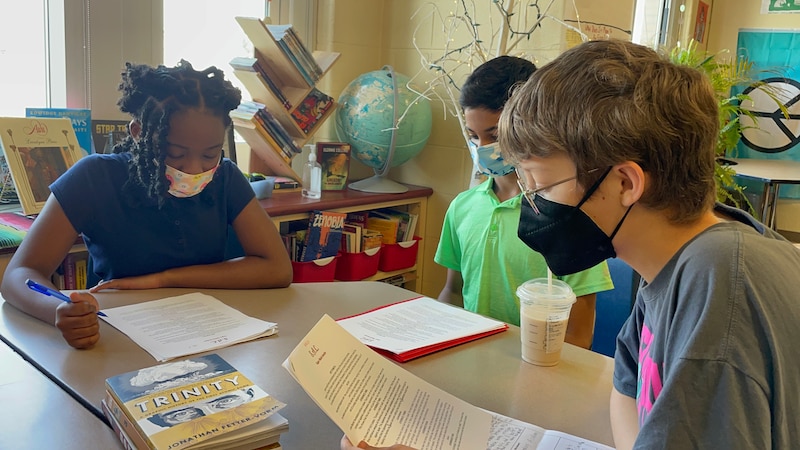
This past spring, the curriculum pushed sixth graders at NTA to think critically about the bombings, nuclear testing in the Pacific, and the use of nuclear power as a fossil fuel alternative. It also helped spur up-to-the-moment conversations about racism, environmental justice, and oppression.
Earlier this year, Illinois became the first state in the country to require its schools to teach Asian American history starting this fall — a move Gov. JB Pritzker touted as the state’s answer to a national rise in hate crimes and discrimination against Asian Americans during the pandemic.
That legislation and the new NTA nuclear curriculum come amid a national backlash against teaching ethnic studies and exploring troubling chapters of the country’s history. The curriculum’s creators say it can help schools meet the new Illinois law’s requirements, and they are exploring ways to get it into more classrooms.
NTA teachers set out to create nuclear curriculum
The idea of the nuclear curriculum came from a chance social media sighting.
In 2019, someone snapped a photo of F. Scott Fitzgerald’s “The Great Gatsby” and Hersey’s “Hiroshima” from the Senn High School’s library collection discarded in a dumpster to make room for new books. The photo cropped up in a Facebook parent group and later on Reddit, where it garnered more than 1,600 comments.
Kojima Hibino saw the photo in a Chalkbeat Chicago story about the online debate. The image was jarring to her, bringing up questions she had long harbored: Why is so little Asian American and Pacific Islander history taught in American schools? Why are school conversations about the atomic bombing of Japan often so stripped of complexity?
She reached out to Miyamoto, the DePaul professor, who was even more taken aback by the dumpster photo. Kojima Hibino also brought up the issue with Jessica Kibblewhite, NTA’s middle school social science teacher, in the parking lot of the school, near Chicago’s Chinatown. The two had both played an active role in a successful campaign to ward off the school’s planned closure in 2018.
Kibblewhite and later Laura Gluckman, the middle school science teacher, voiced interest in addressing nuclear power and the bombing in their classrooms. But first, they had some studying to do.
The two teachers got a private lecture from Miyamoto. They read or revisited books about the bombing and nuclear power, such as “African Americans Against the Bomb.”
“It’s been a long process of learning for Laura and me,” Kibblewhite said. “We are learning alongside our students.”
Then the group set out to craft a curriculum that connected to pressing social issues. Gluckman, for instance, dug into the effects of nuclear testing on indigenous communities in New Mexico and residents of the Marshall Islands in the Pacific Ocean. She drew parallels between these historical developments and environmental justice flashpoints in the Chicago of today: the botched implosion of the Hilco smokestack during the pandemic and the debate over relocating General Iron, a metal scrapper, to the Southeast Side.
They called it the Paper Crane Project, in honor of Sadako Sasaki, the young Hiroshima bombing survivor who folded more than a thousand origami cranes before she died of leukemia.
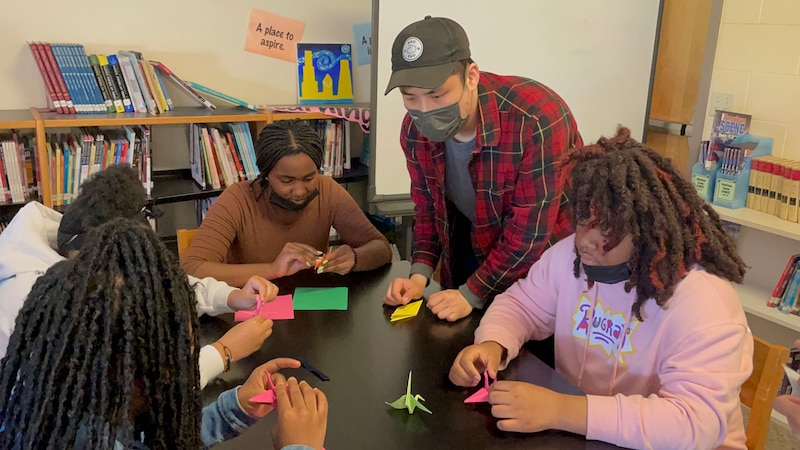
As the NTA group was putting the finishing touches on the curriculum last summer, the Illinois Legislature passed the Teaching Equitable Asian American Community History, or TEAACH, Act, which requires districts to teach Asian American history at both the elementary and high school level. In addition to being a response to anti-Asian violence during the pandemic, the law was part of a broader push to make social studies lessons in Illinois more inclusive, reflecting the experiences of an increasingly diverse student body.
The number of Asian American students statewide has increased by roughly 10% since 2015; in Chicago, that number has remained fairly stable, but as the district’s overall enrollment shrank, Asian American students have come to make up a slightly larger portion, just more than 4%.
The TEAACH law leaves it up to districts to decide exactly what to teach and how much time to devote to the subject. For the teachers at NTA preparing to tackle questions of nuclear power with their students, the new legislation only reinforced their sense of purpose.
Sixth graders helped pilot the curriculum in May
In Kibblewhite’s sixth grade classroom in May, Landon Bermudez pulled up a 1945 entry from former President Harry Truman’s diary on his laptop.
He had just taken the floor in a lively classroom discussion over the ethics of America’s bombing of Hiroshima and Nagasaki — and that diary entry from the eve of the attack was just the ammunition he needed to argue that bombing was unjustified. In it, Truman voices misgivings about the human toll using the bomb would exact on civilians — but, Landon pointed out to his classmates, he also refers to the Japanese as “savages” and “fanatic.”
“This is showing definite racism by the word choice he is using,” Landon told the class, a moment the teacher captured on video.
Kibblewhite’s sixth graders studied a slew of documents and texts to prepare for that day’s discussion, examining the question of whether the bombing was ethical from different perspectives. Some, like Landon, argued the bombing, which cost more than 200,000 Japanese lives, should never have happened at that late stage of the war. Others countered it was the fastest way to put a definitive end to the war.
The conversation got heated at times, but students remembered their charge to always base their arguments in evidence. “Think deeper,” Kibblewhite had often urged students in the runup to the class.
“I really enjoyed that class because you were able to share your opinion instead of listening to someone else’s – and you had to back it up,” Landon said in an interview.
At NTA, themes of resistance and social justice run through Kibblewhite’s teaching. The nuclear discussion was a way to pull these themes together.
“It was gratifying to see students weave in all that knowledge at the end of the school year,” she said. “Students were really thinking about why the issue is so deeply complex, not just echoing the common narrative.”
In Gluckman’s classroom, the sixth graders examined the use of nuclear energy to reduce carbon emissions. Students studied the benefits of nuclear power as an alternative to fossil fuels. But they also explored the human impact of uranium mining and nuclear power plant disasters such as Chernobyl.
At NTA this school year, all four sixth grade classrooms will use the new nuclear curriculum. Kibblewhite and Gluckman are planning to add a call to action: Students might host a symposium for peers, parents, and teachers, or create poetry or art, or hold a press conference on the University of Chicago campus, home of the Manhattan Project.
“We want to support students to feel like activists, changemakers, and leaders,” Kibblewhite said.
The teachers also want to bring the curriculum to other campuses. They have submitted it to the nonprofit Asian Americans Advancing Justice, which is compiling resources for educators to help their schools comply with TEAACH, and they plan to craft professional development for colleagues.
They hope the curriculum would help these educators better connect with students such as NTA seventh grader Maya Williams, who was in Kibblewhite’s classroom last spring.
Maya, whose mother is Japanese, had made origami before, but she got to make paper cranes — a symbol of peace in the bombing’s aftermath — with her classmates for the first time. She also got to learn in a deeper, more nuanced way about the end of the war, from multiple perspectives, including that of Japanese-Americans at the time.
“The entire project was memorable,” said Maya. “ It was the first time I had ever learned about Japan in depth in a school setting.”
Mila Koumpilova is Chalkbeat Chicago’s senior reporter covering Chicago Public Schools. Contact Mila at mkoumpilova@chalkbeat.org.

